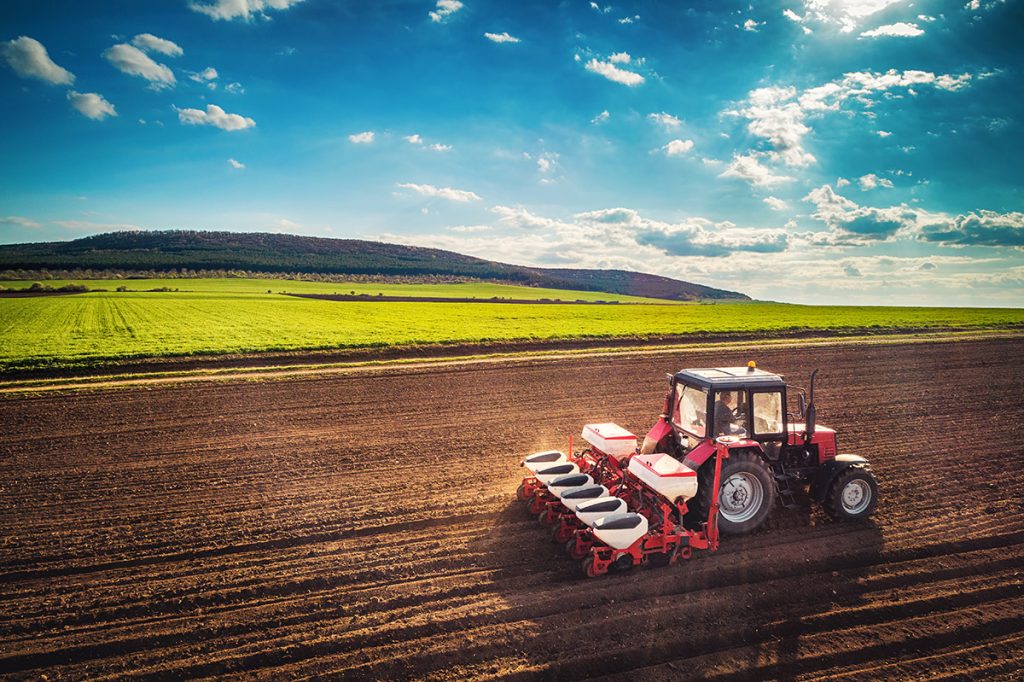
When it comes to seeding your CRP practice, proper planning is key. Different crops have different requirements, so there’s no one-size-fits-all approach. Instead, a successful seeding will depend on the time of year, your local environment, the moisture level, and other elements.
Seeding can be a complex process with many variables to consider before you begin. Whether you’re seeding for the first time or have years of experience, it’s important to keep these factors in mind as you start your project.
Timing
Timing is a crucial component of a successful seeding plan. There are two methods of seeding that rely on timing: dormant seeding and spring seeding.
With dormant seeding, seeds are planted in the late fall, typically after the 1st of November. Seeds remain dormant through the winter. Once the weather starts to warm during the spring months, the seeds naturally begin to germinate. The melting snow and rain during the spring provide plenty of moisture for the germination process.
Spring seeding allows you to plant your seed when the soil has reached optimal germination conditions. The timing can vary based on the type of seed, but seeds are usually planted between May and July. With spring seeding, your seeds can begin growing right away, rather than waiting through the dormant period.
Preparation
Preparing your land for seeding is essential for a productive outcome. Controlling weeds and removing other competitive plants from the area helps to ensure successful germination.
Particularly in the first two to three years of your CRP practice, mowing is critical for weed control. Not only does it prevent weeds from seeding, but also cuts the canopy, allowing your CRP seed to receive the proper amount of light and heat from the sun.
Herbicide application is also important for seeding preparation and weed management. The type of herbicide you use will depend on the type of weeds being eradicated and the CRP seed mix you are planting.
In addition, there may be certain restrictions on the type of herbicide you use depending on your state and your CRP contract. An experienced CRP contractor like FDCE or an NCRS representative can provide assistance with choosing and applying the correct herbicide.
Environment
Your local environment plays a critical and complex role in the success of your seed establishment. The moisture levels, temperature, lighting, and other environmental conditions all affect your seeding.
Seeds must receive the proper amount of moisture to germinate. Too much moisture can cause seeds to rot, while seeds that are too dry can shrivel and die during stages of growth. Additionally, the temperature during germination will determine how your seeds thrive.
Planting native species is one way to make sure the seeds you plant will germinate in your local environment. Plants that are native to your area have evolved over thousands of years to grow based on your specific region’s temperature and weather conditions.
Type of Seed
Selecting the right seed is another key to germination. The type and quality of the seed you use has a major impact on the success of your growth. Your seed should be tested for purity levels and germination, as well as noxious weeds.
Seed mixes designed especially for CRP and your local environment are usually the best options for an effective establishment. At All Native Seed, we reprocess our CRP seed mixes to ensure higher purity levels and germination rates for optimal seeding results.
If you need help deciding on the right type of seed or any other kind of seeding assistance, look no further than All Native Seed. Our experienced staff can provide you with a CRP seed mix designed to efficiently germinate and our parent company, FDCE, can assist with the seeding process.
From determining the correct type of herbicide to use to providing high-quality, competitively priced seed to seed establishment, our team is here to help. Reach out to us at All Native Seed for personalized assistance today.
